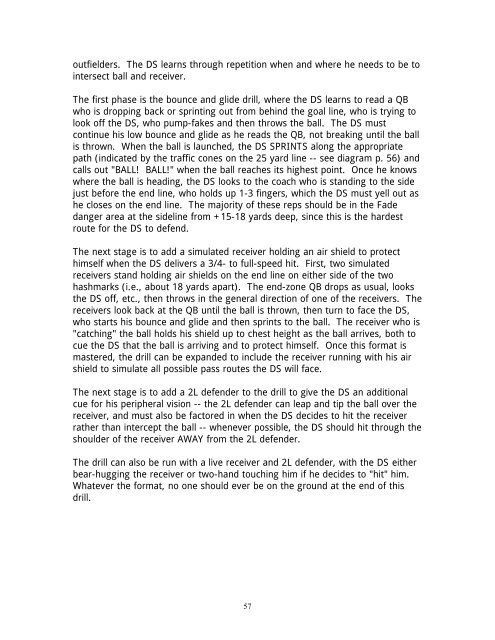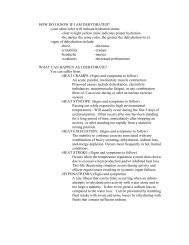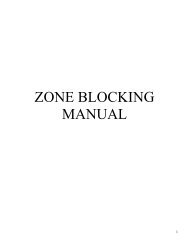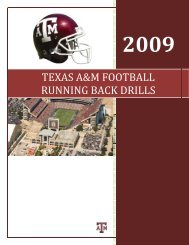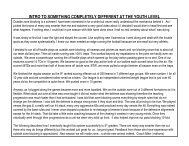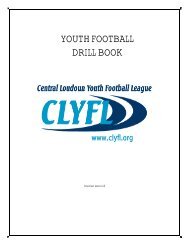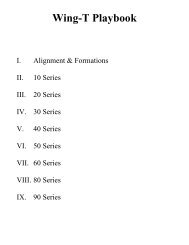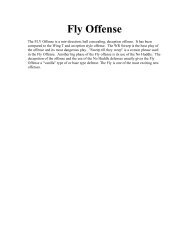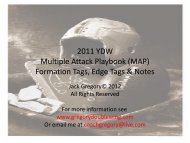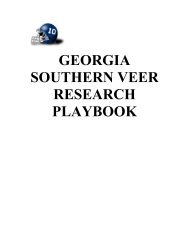Create successful ePaper yourself
Turn your PDF publications into a flip-book with our unique Google optimized e-Paper software.
outfielders. The DS learns through repetition when and where he needs to be tointersect ball and receiver.The first phase is the bounce and glide drill, where the DS learns to read a QBwho is dropping back or sprinting out from behind the goal line, who is trying tolook off the DS, who pump-fakes and then throws the ball. The DS mustcontinue his low bounce and glide as he reads the QB, not breaking until the ballis thrown. When the ball is launched, the DS SPRINTS along the appropriatepath (indicated by the traffic cones on the 25 yard line -- see diagram p. 56) andcalls out "BALL! BALL!" when the ball reaches its highest point. Once he knowswhere the ball is heading, the DS looks to the coach who is standing to the sidejust before the end line, who holds up 1-3 fingers, which the DS must yell out ashe closes on the end line. The majority of these reps should be in the Fadedanger area at the sideline from +15-18 yards deep, since this is the hardestroute for the DS to defend.The next stage is to add a simulated receiver holding an air shield to protecthimself when the DS delivers a 3/4- to full-speed hit. First, two simulatedreceivers stand holding air shields on the end line on either side of the twohashmarks (i.e., about 18 yards apart). The end-zone QB drops as usual, looksthe DS off, etc., then throws in the general direction of one of the receivers. Thereceivers look back at the QB until the ball is thrown, then turn to face the DS,who starts his bounce and glide and then sprints to the ball. The receiver who is"catching" the ball holds his shield up to chest height as the ball arrives, both tocue the DS that the ball is arriving and to protect himself. Once this format ismastered, the drill can be expanded to include the receiver running with his airshield to simulate all possible pass routes the DS will face.The next stage is to add a 2L defender to the drill to give the DS an additionalcue for his peripheral vision -- the 2L defender can leap and tip the ball over thereceiver, and must also be factored in when the DS decides to hit the receiverrather than intercept the ball -- whenever possible, the DS should hit through theshoulder of the receiver AWAY from the 2L defender.The drill can also be run with a live receiver and 2L defender, with the DS eitherbear-hugging the receiver or two-hand touching him if he decides to "hit" him.Whatever the format, no one should ever be on the ground at the end of thisdrill.57


